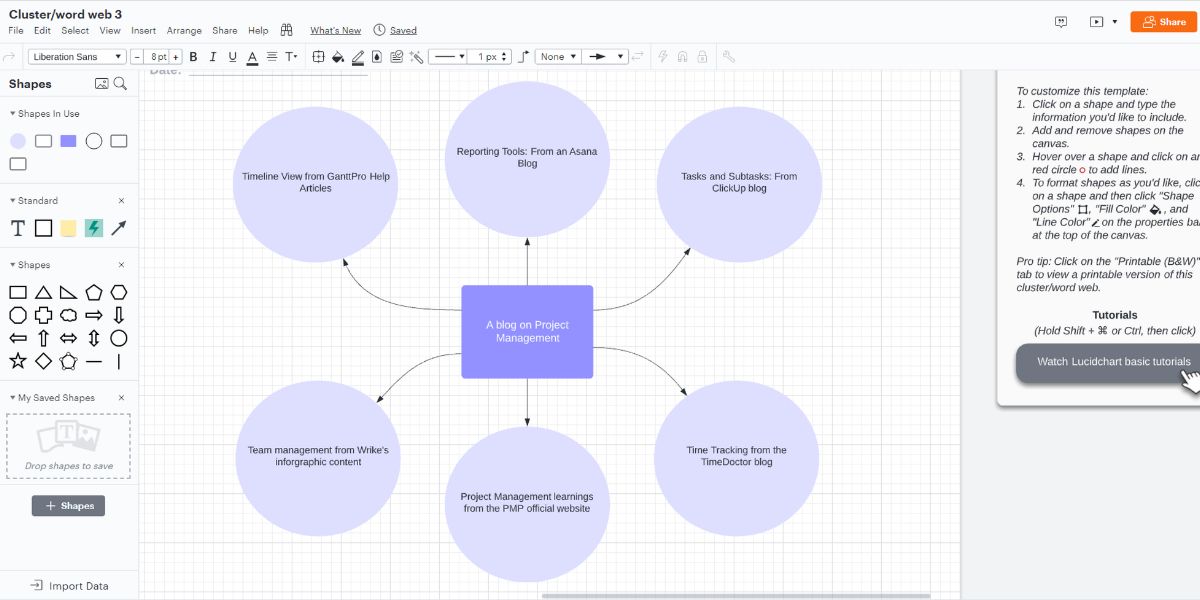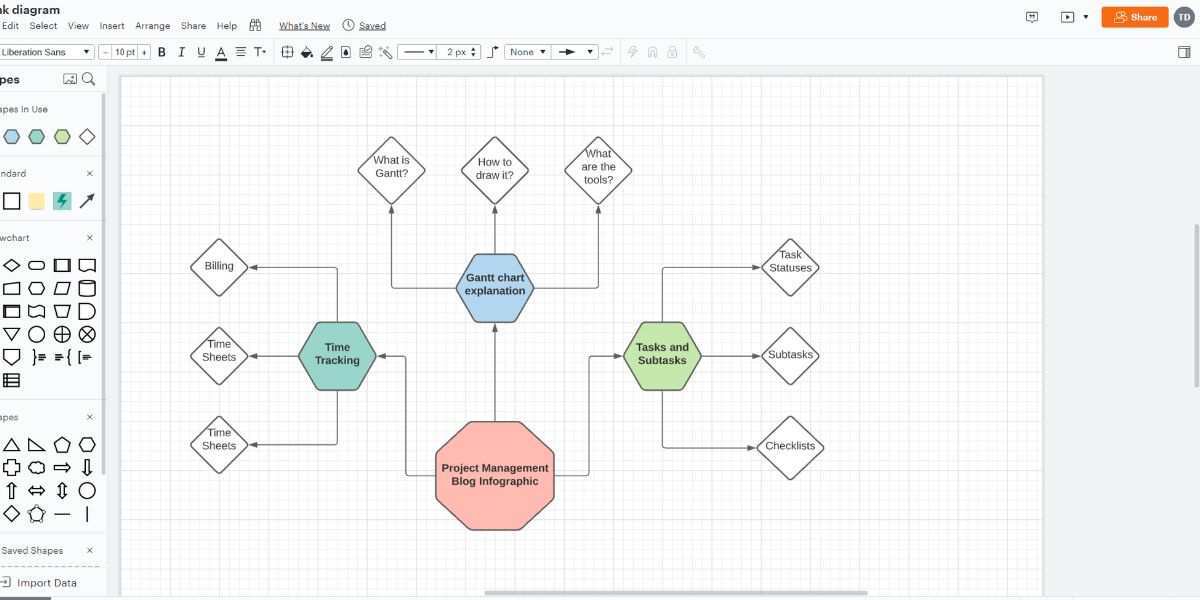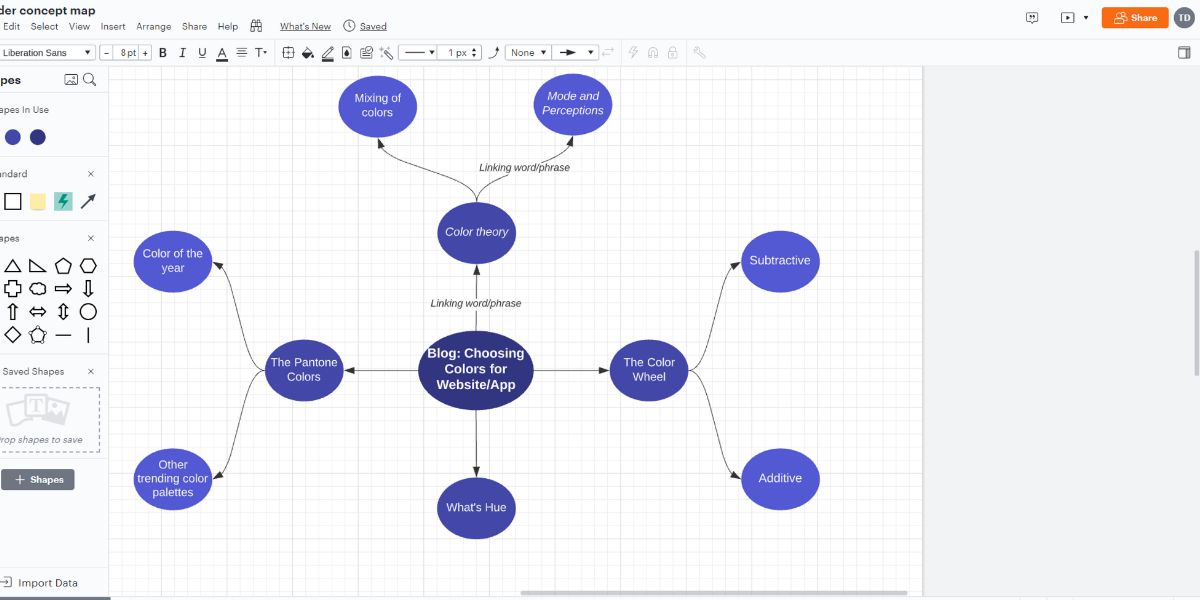A blog post containing plain text blocks can hardly attract the present-day audience and retain their attention till the end. Instead, visual blogs or visual content is capable of offering improved reader engagement and better responses.
While creating a visual blog requires more effort than a plain blog post, a mind map can significantly reduce your labor.
Let’s learn about the stages of creating a visual blog where you can incorporate a mind map.
1. Use Mind Maps to Catalog Resources
To write a resourceful blog, you need to collect your material from diverse sources. In most cases, you also need to include citations at the end of your blog post. This process might be easy while you’re writing a 500-word blog post, but what about a blog post with 2000+ words?
You need to collect data for that blog from various primary and secondary resources. Keeping track of this information and its sources can be challenging. Fortunately, a mind map is a handy solution.
This method will help you sort ideas according to their sources, using either the complete URL or just the name of the website. With this, you can easily include references or in-text citations.
2. Assemble Suitable Quotations With Mind Maps
Quotations are a visual blog component that makes it look catchy. Depending on the style, some blogs might require you to add multiple quotations on the same or different topics.
Whatever be the case, using a mind map will help you visualize your primary quotes in one place and save you from switching between different sites. Thus, it becomes easier to choose the final ones for your blog.
Moreover, a mind map is also useful while writing quotation-based blogs where you need to add listicles of quotations.
3. Mind Maps Can Help You Design Infographics
An infographic is probably the most common component of a visual blog. You may describe your ideas elaborately in a blog, but a reader might not have the patience to read till the end.
In this case, including an infographic will help you convey the crucial data and information of your blog clearly, without spending as many words. Readers can quickly understand it due to the visual representation of the data and stats.
Since an infographic should only contain crucial data, a mind map will help you filter the necessary points. Create a mind map and include all the important info of a blog. Then, select only the most beneficial ones.
Moreover, you can use a mind map to create different sections of an infographic and to sort the data for each segment.
4. Create Flowchart-Type Mind Maps for Process Explanation
A flowchart refers to a diagram that helps you visualize the individual steps of a process. If you’re planning to write a blog that involves chronology or a sequence, a flowchart is a compulsory part of it.
Mind maps should not always have a shape like a spider. It’s possible to make a right-facing mind map—a perfect substitute to the traditional flowchart. For blogs about historical events or scientific processes, you should use a mind map to note down yearly events or steps sequentially.
The good thing is, you can also include these flowchart-type mind maps in your blog. Thus, readers will have a better idea about the process.
5. Organize Ideas With Mind Maps
When you decide to write a blog on a topic and start brainstorming, numerous ideas come to your mind. At this stage, you may not be sure about which ones to include and which ideas to discard.
Nevertheless, you must note down every idea to make sure you don’t miss anything. Use a mind map for this purpose when you create an outline for a blog.
Sophisticated mind mapping tools allow you to write down an idea immediately after it comes to your mind. Later, you can move the points to anywhere on that map. This feature will help you organize your thoughts as topics, sub-topics, and related ideas about the prime concept.
Use Mind Maps for Attractive Blogs
Only a visual blog can get you the desired readership and response. With a mind map, you can make all the different stages of blog creation seamless.
Besides a visual blog, you can also use mind mapping for other tasks of day-to-day life for better productivity.




